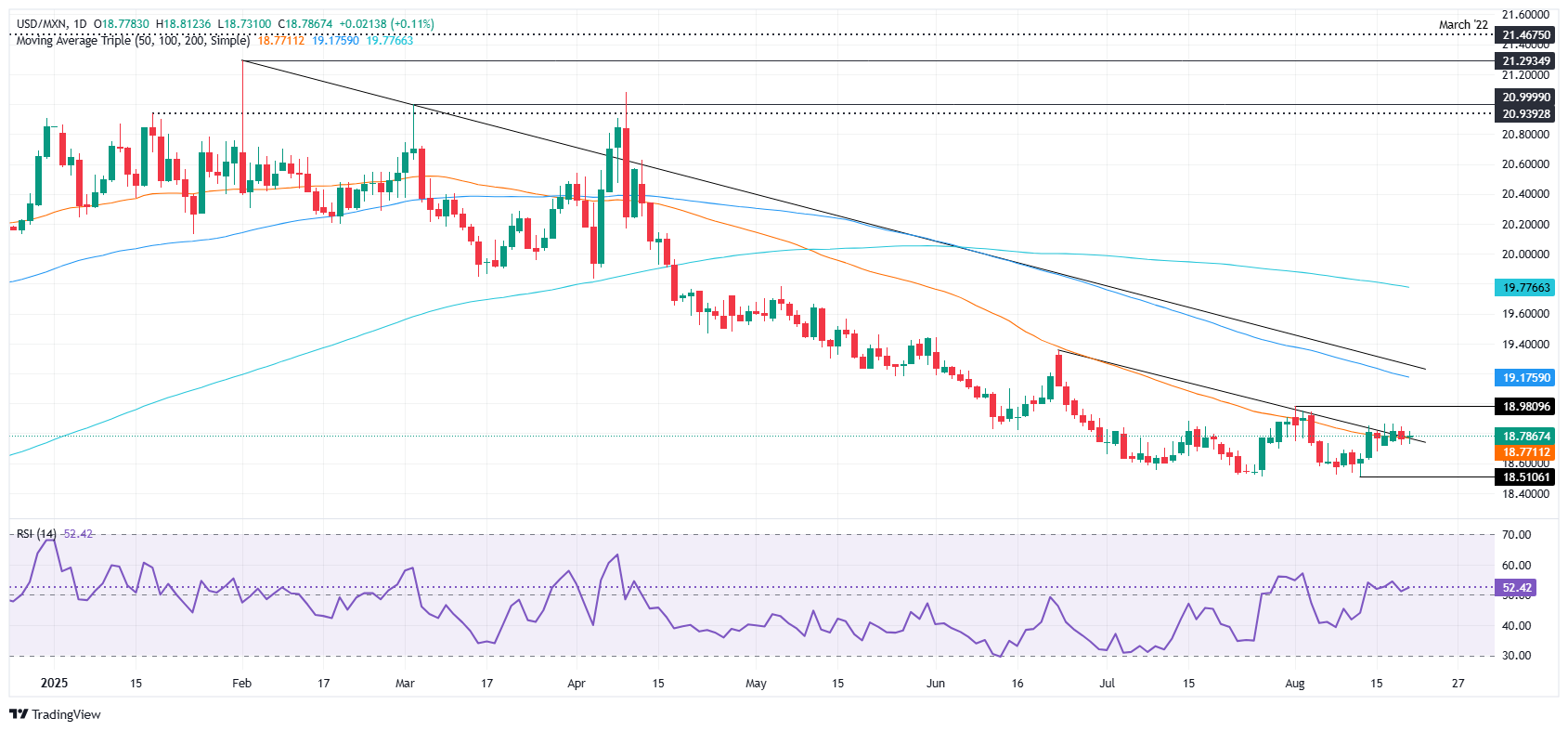Banxico Minutes show split vote, further cuts lie ahead
Banco de Mexico (Banxico) revealed the minutes of the August 7 monetary policy meeting, in which the central bank decided to reduce rates by 25 basis points (bps) to 7.75% on a vote split, with Deputy Governor Jonathan Heath in favor of keeping rates unchanged.
Central bank reduced rates to 7.75% in August; future easing will hinge on inflation dynamics despite upside risk
The minutes mentioned that inflation fell to 3.51% in July and subdued economic growth despite the modest rebound in the second quarter of 2025, as the main reasons behind the Mexican institution's decision.
Alongside this, the central bank cited that the appreciation of the Mexican Peso in 2025 is helping to contain inflation amid trade tensions and tariff uncertainty.
Besides this, the board noted that they “will consider additional cuts to the benchmark rate.” However, it would depend on inflation dynamics, even though Banxico sees the risks of inflation tilted to the upside.
USD/MXN reaction to the minutes

Banxico FAQs
The Bank of Mexico, also known as Banxico, is the country’s central bank. Its mission is to preserve the value of Mexico’s currency, the Mexican Peso (MXN), and to set the monetary policy. To this end, its main objective is to maintain low and stable inflation within target levels – at or close to its target of 3%, the midpoint in a tolerance band of between 2% and 4%.
The main tool of the Banxico to guide monetary policy is by setting interest rates. When inflation is above target, the bank will attempt to tame it by raising rates, making it more expensive for households and businesses to borrow money and thus cooling the economy. Higher interest rates are generally positive for the Mexican Peso (MXN) as they lead to higher yields, making the country a more attractive place for investors. On the contrary, lower interest rates tend to weaken MXN. The rate differential with the USD, or how the Banxico is expected to set interest rates compared with the US Federal Reserve (Fed), is a key factor.
Banxico meets eight times a year, and its monetary policy is greatly influenced by decisions of the US Federal Reserve (Fed). Therefore, the central bank’s decision-making committee usually gathers a week after the Fed. In doing so, Banxico reacts and sometimes anticipates monetary policy measures set by the Federal Reserve. For example, after the Covid-19 pandemic, before the Fed raised rates, Banxico did it first in an attempt to diminish the chances of a substantial depreciation of the Mexican Peso (MXN) and to prevent capital outflows that could destabilize the country.

